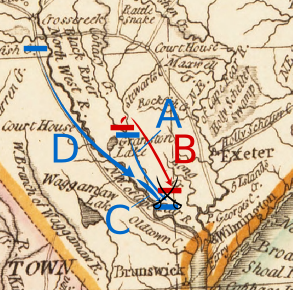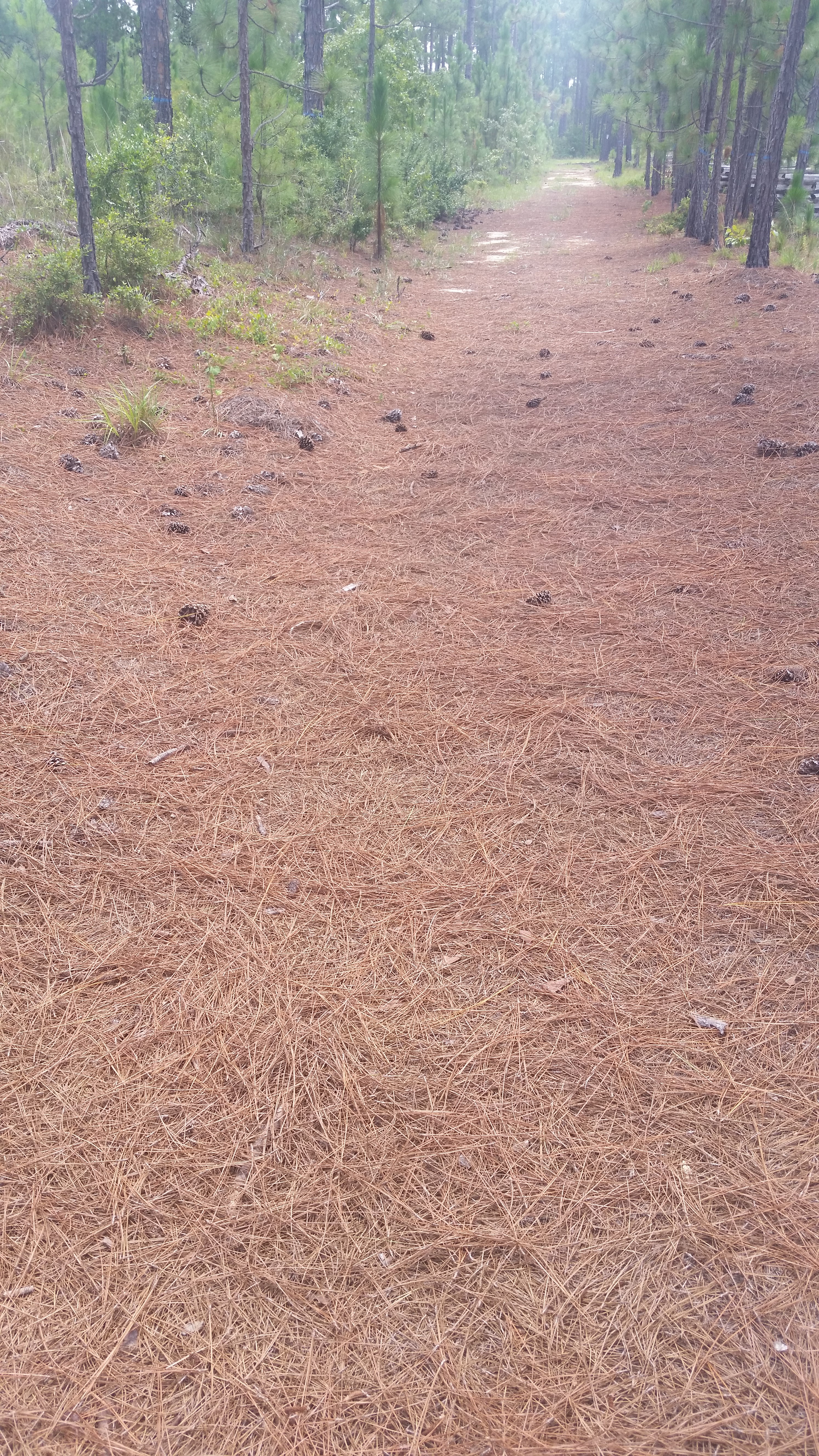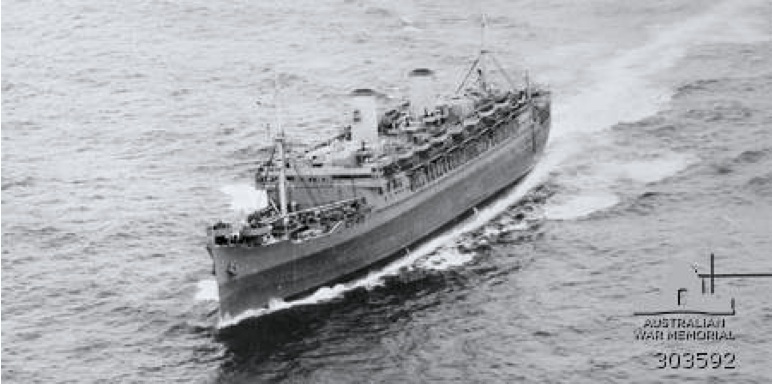|
SS Alexander Lillington
SS ''Alexander Lillington'' ( MC contract 869) was a Liberty ship built in the United States during World War II. She was named after Alexander Lillington, a North Carolina Patriot militia officer who served at the Battle of Moore's Creek Bridge and the Battle of Camden. The ship was laid down by North Carolina Shipbuilding Company in their Cape Fear River yard on November 2, 1942, and launched on December 6, 1942. ''Lillington'' was chartered to the South Atlantic Steamship Company for the War Shipping Administration until January 1947. She was operated by Waterman Steamship Corporation until December 1947. From then until January 1948 when ''Lillington'' was placed in the Wilmington Fleet of the National Defense Reserve Fleet The National Defense Reserve Fleet (NDRF) consists of ships of the United States of America, mostly merchant vessels, that have been "mothballed" but can be activated within 20 to 120 days to provide shipping during national military emergencies ... ... [...More Info...] [...Related Items...] OR: [Wikipedia] [Google] [Baidu] |
Alexander Lillington
John Alexander Lillington (c. 1725 – 1786), also known as Alexander John Lillington, was an American planter, politician and Patriot officer from North Carolina in the American Revolutionary War. He fought in the Battle of Moore's Creek Bridge in 1776 as Colonel of the Wilmington District Minutemen. He was afterwards commissioned as colonel of the 6th North Carolina Regiment of the Continental Army, but resigned after a month to instead serve as brigadier general of the Wilmington District Brigade of the North Carolina militia. At the Battle of Camden his troops were among the militia who fled the field. His son John Lillington also served in the North Carolina militia. Early life John Alexander Lillington was born in about 1725 in Beaufort Precinct, Province of North Carolina and was the son of John and Sarah Porter Lillington. He was orphaned as a child and raised by his uncle, Edward Moseley. He married Sarah Waters of Brunswick County, North Carolina. They had two so ... [...More Info...] [...Related Items...] OR: [Wikipedia] [Google] [Baidu] |
Battle Of Camden
The Battle of Camden (August 16, 1780), also known as the Battle of Camden Court House, was a major victory for the British in the Southern theater of the American Revolutionary War. On August 16, 1780, British forces under Lieutenant General Charles, Lord Cornwallis routed the numerically superior U.S. forces led by Major General Horatio Gates about four miles north of Camden, South Carolina, thus strengthening the British hold on the Carolinas following the capture of Charleston. The rout was a personally humiliating defeat for Gates, the U.S. general best known for commanding the American forces at the British defeat at Saratoga three years previously. His army had possessed a great numerical superiority over the British force, having twice the personnel, but his command of them was seen as disorganized and chaotic. Following the battle, he was regarded with disdain by his colleagues and he never held a field command again. His political connections, however, helped him a ... [...More Info...] [...Related Items...] OR: [Wikipedia] [Google] [Baidu] |
Liberty Ships
Liberty ships were a ship class, class of cargo ship built in the United States during World War II under the Emergency Shipbuilding Program. Though British in concept, the design was adopted by the United States for its simple, low-cost construction. Mass-produced on an unprecedented scale, the Liberty ship came to symbolize U.S. wartime industrial output. The class was developed to meet British orders for transports to replace ships that had been lost. Eighteen American shipyards built 2,710 Liberty ships between 1941 and 1945 (an average of three ships every two days), easily the largest number of ships ever produced to a single design. Their production mirrored (albeit on a much larger scale) the manufacture of "Hog Islander" and similar standardized ship types during World War I. The immensity of the effort, the number of ships built, the role of Rosie the Riveter, female workers in their construction, and the survival of some far longer than their original five-year desig ... [...More Info...] [...Related Items...] OR: [Wikipedia] [Google] [Baidu] |
National Defense Reserve Fleet
The National Defense Reserve Fleet (NDRF) consists of ships of the United States of America, mostly merchant vessels, that have been "mothballed" but can be activated within 20 to 120 days to provide shipping during national military emergencies, or non-military emergencies such as commercial shipping crises. The NDRF is managed by the U.S. Department of Transportation's Maritime Administration (MARAD). It is distinct from the United States Navy reserve fleets, which consist largely of warships. NDRF vessels are at the fleet sites at James River, Virginia (James River Reserve Fleet); Beaumont, Texas (Beaumont Reserve Fleet); and Suisun Bay, California (Suisun Bay Reserve Fleet); and at designated outported berths. Former anchorage sites included Stony Point, New York (Hudson River Reserve Fleet); Wilmington, North Carolina; Mobile, Alabama; Astoria, Oregon; and Olympia, Washington. Through the 2010s, the oldest, most decrepit hulls at Suisun Bay were stripped of toxic ma ... [...More Info...] [...Related Items...] OR: [Wikipedia] [Google] [Baidu] |
Waterman Steamship Corporation
Waterman is an American deep sea ocean carrier, specializing in liner services and time charter contracts. It is owned by SEACOR Holdings. History Waterman was founded in 1919 in Mobile, Alabama by John Barnett Waterman, Henry Crawford Slaton, T.M. Stevens, W.D. Bellingrath, and C.W. Hempstead following their departure from the British-owned Elder Dempster Steamship Company. Waterman and associates started with just one ship, the ''Eastern Sun'' leased from the U.S. Shipping Board for service to Liverpool and Manchester.From the Waterman Steamship Corporation records at thUniversity of South Alabama website/ref> In 1955, McLean Industries, Inc. purchased the stock of Waterman Steamship Corporation from the stockholders. From its single-ship beginnings, Waterman had amassed a fleet of 125 ships, owned and operated its own shipbuilding and repair yards, owned or controlled three other shipping companies and employed thousands of workers. In 2017, SEACOR Holdings acquired Waterman ... [...More Info...] [...Related Items...] OR: [Wikipedia] [Google] [Baidu] |
War Shipping Administration
The War Shipping Administration (WSA) was a World War II emergency war agency of the US government, tasked to purchase and operate the civilian shipping tonnage the United States needed for fighting the war. Both shipbuilding under the Maritime Commission and ship allocation under the WSA to Army, Navy or civilian needs were closely coordinated though Vice Admiral Emory S. Land who continued as head of the Maritime Commission while also heading the WSA. Establishment A shortage of vessels further complicated by requirements to take vessels out of service for conversion and armament was of concern at the highest levels, including the President. Particular concern that available shipping would not be used effectively led to his establishment immediately on the nation's active entry into the war of the Strategic Shipping Board composed of the Chairman of the Maritime Commission, Army Chief of Staff, Chief of Naval Operations and Mr. Harry Hopkins reporting directly to the President ... [...More Info...] [...Related Items...] OR: [Wikipedia] [Google] [Baidu] |
South Atlantic Steamship Company
South Atlantic Steamship Company was the passenger and cargo founded in 1928 in Savannah, Georgia that ran the South Atlantic steamship Line. At the started by chartering foreign ships to run the lines in tramp trade. Later scheduled cargo services was added to the line. In 1958 the company was taken over by United States Lines. In 1961 United States Lines closed the Atlantic steamship line and renamed the Atlantic steamship line ships. US homes ports were: Jacksonville, Florida, Savannah, Wilmington, North Carolina and Charleston, South Carolina. Main foreign ports were: London,Liverpool and Manchester UK. At its peak, it operated 60 ships during World War II. During World War II the South Atlantic steamship line was active with charter shipping with the Maritime Commission and War Shipping Administration. During wartime, the South Atlantic steamship line operated Victory ships and Liberty shipss. World War II South Atlantic Steamship Company ships were used to help the World War ... [...More Info...] [...Related Items...] OR: [Wikipedia] [Google] [Baidu] |
Cape Fear River
The Cape Fear River is a long blackwater river in east central North Carolina. It flows into the Atlantic Ocean near Cape Fear, from which it takes its name. The river is formed at the confluence of the Haw River and the Deep River (North Carolina) in the town of Moncure, North Carolina. Its river basin is the largest in the state: 9,149 square miles. The river is the most industrialized river in North Carolina, lined with power plants, manufacturing plants, wastewater treatment plants, landfills, paper mills and industrial agriculture. Relatedly, the river is polluted by various substances, including suspended solids and runoff and manmade chemicals. These chemicals include per- and polyfluoroalkyl substances (PFAS), GenX, perfluorooctanesulfonic acid (PFOS), perfluorooctanoic acid (PFOA), byproducts of production of the fluoropolymer Nafion; and intermediates used to make other fluoropolymers (e.g. PPVE, PEVE and PMVE Perfluoroether). Industrial chemicals such as 1,4-Dioxane ... [...More Info...] [...Related Items...] OR: [Wikipedia] [Google] [Baidu] |
Battle Of Moore's Creek Bridge
The Battle of Moore's Creek Bridge was a minor conflict of the American Revolutionary War fought near Wilmington (present-day Pender County), North Carolina, on February 27, 1776. The victory of the North Carolina Provincial Congress' militia force over British governor Josiah Martin's and Tristan Worsley's reinforcements at Moore's Creek marked the decisive turning point of the Revolution in North Carolina. American independence would be declared less than five months later. Loyalist recruitment efforts in the interior of North Carolina began in earnest with news of the Battles of Lexington and Concord, and patriots in the province also began organizing Continental Army and militia. When word arrived in January 1776 of a planned British Army expedition to the area, Martin ordered his militia to muster in anticipation of their arrival. Revolutionary militia and Continental units mobilized to prevent the junction, blockading several routes until the poorly armed loyalists we ... [...More Info...] [...Related Items...] OR: [Wikipedia] [Google] [Baidu] |
North Carolina Shipbuilding Company
North Carolina Shipbuilding Company was a shipyard in Wilmington, North Carolina, created as part of the U.S. Government's Emergency Shipbuilding Program in the early days of World War II. From 1941 through 1946, the company built 243 ships in all, beginning with the Liberty ship SS ''Zebulon B. Vance'', and including 54 ships of the US Navy. Most of the latter were attack cargo ships (AKA), amphibious force flagships (AGC) and ammunition ships (AE). A list of all 54 Navy ships appears at the end of this article, as does a link to a detailed record of all ships built by the company. History The company's history began in 1940, when the U.S. government saw the acute need to build a large fleet of Merchant ships, both to fulfill commitments to the British and, if The United Kingdom fell, to strengthen its position for war. The Maritime Commission decided to allow established shipyards to build new facilities and operate them for the government. Newport News Shipbuilding and Drydock ... [...More Info...] [...Related Items...] OR: [Wikipedia] [Google] [Baidu] |
Patriot (American Revolution)
Patriots, also known as Revolutionaries, Continentals, Rebels, or American Whigs, were the colonists of the Thirteen Colonies who rejected British rule during the American Revolution, and declared the United States of America an independent nation in July 1776. Their decision was based on the political philosophy of republicanism—as expressed by such spokesmen as Thomas Jefferson, John Adams, and Thomas Paine. They were opposed by the Loyalists, who supported continued British rule. Patriots represented the spectrum of social, economic, and ethnic backgrounds. They included lawyers such as John Adams, students such as Alexander Hamilton, planters such as Thomas Jefferson and George Mason, merchants such as Alexander McDougall and John Hancock, and farmers such as Daniel Shays and Joseph Plumb Martin. They also included slaves and freemen such as Crispus Attucks, one of the first casualties of the American Revolution; James Armistead Lafayette, who served as a double agent ... [...More Info...] [...Related Items...] OR: [Wikipedia] [Google] [Baidu] |
World War II
World War II or the Second World War, often abbreviated as WWII or WW2, was a world war that lasted from 1939 to 1945. It involved the vast majority of the world's countries—including all of the great powers—forming two opposing military alliances: the Allies and the Axis powers. World War II was a total war that directly involved more than 100 million personnel from more than 30 countries. The major participants in the war threw their entire economic, industrial, and scientific capabilities behind the war effort, blurring the distinction between civilian and military resources. Aircraft played a major role in the conflict, enabling the strategic bombing of population centres and deploying the only two nuclear weapons ever used in war. World War II was by far the deadliest conflict in human history; it resulted in 70 to 85 million fatalities, mostly among civilians. Tens of millions died due to genocides (including the Holocaust), starvation, ma ... [...More Info...] [...Related Items...] OR: [Wikipedia] [Google] [Baidu] |






.jpg)


